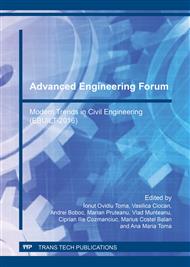p.551
p.557
p.564
p.573
p.581
p.587
p.596
p.602
p.609
Implementing the Life Cycle Cost Analysis in a Building Design
Abstract:
In the context of increasing concerns for sustainable development new comprehensive methods are developed by builders and architects in order to reduce the environmental impact of buildings. Life Cycle Cost Analysis (LCCA) is one of these methods, perhaps the most functional one for the evaluation process. Using this LCCA contributes to the integration of the design process and helps identify opportunities for energy efficiency, such as appropriate zoning, natural lighting and design optimization of heating, ventilation and air conditioning (HVAC). It also helps in finding the best solutions for reducing overall costs. LCCA is very little known in Romania and quasi unused practice for building design and for this reason the present paper contains a broad overview of the methodology and it’s uses highlighting its main advantages and a case study of the building design intended for laboratory research. The analyzed building is one of the 12 identical buildings of Transilvania University Research and Development Institute from Brasov.
Info:
Periodical:
Pages:
581-586
Citation:
Online since:
March 2017
Authors:
Price:
Сopyright:
© 2017 Trans Tech Publications Ltd. All Rights Reserved
Share:
Citation:



